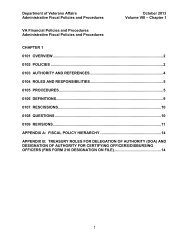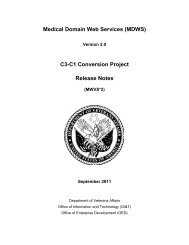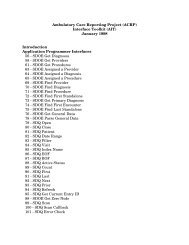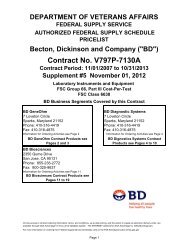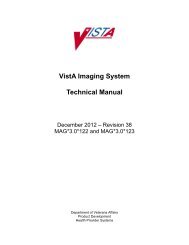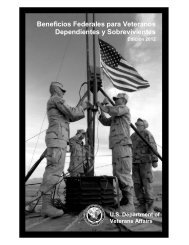Optimal Temperature for Cardioplegia During Coronary Artery ...
Optimal Temperature for Cardioplegia During Coronary Artery ...
Optimal Temperature for Cardioplegia During Coronary Artery ...
Create successful ePaper yourself
Turn your PDF publications into a flip-book with our unique Google optimized e-Paper software.
OPTIMAL TEMPERATURE FOR CARDIOPLEGIA FINAL REPORT<br />
Table 2. Abstracted details of large database analyses (plus relevant serendipitous or post hoc analyses of<br />
cardioplegia temperature)<br />
Reference<br />
Subjects/Methods Results<br />
Mallidi, 2003 6064 patients in Warm Heart Trial • Cold blood cardioplegia: peri-operative death, myocardial infarction, and<br />
database:<br />
death or myocardial infarction more common;<br />
• 4532 warm or tepid cardioplegia • Actuarial survival at 60 months: 91.1%±1.4% warm group,<br />
• 1532 cold cardioplegia<br />
89.9%±1.3% cold group p = .09);<br />
• 762 enrolled in Warm- Heart Trial • Freedom from death or myocardial infarction: 84.7%±1.8% in warm<br />
(Table 1) were allocated to<br />
group,83.2% ±1.6% in cold group (p = .16);<br />
cardioplegia temperature<br />
• Multivariate models: cold blood cardioplegia was associated with poorer<br />
randomly; remainder by surgeon survival (risk ratio 1.3, 95% confidence interval 0.96-1.75, p = .09); and<br />
preference.<br />
freedom from any death or late myocardial infarction (risk ratio 1.93, 95%<br />
confidence interval 1.56-2.39, p = .0001).<br />
Flack, 2000 885 patient randomized CABG<br />
Patch Trial data set (including type<br />
and temperature of cardioplegia and<br />
surgical outcomes) 78% of patients<br />
received blood cardioplegia:<br />
• Cold blood at 3°C - 25°C<br />
• Cold blood with terminal “hot shot”<br />
(warm reperfusion)<br />
• Normothermic blood<br />
High risk patients (ejection fractions <<br />
36%) who had CABG with random<br />
assignment of cardioverter defibrillator<br />
implantation during the procedure<br />
Abramov, 2000 Data on 4839 CABG procedures were<br />
divided into 3 time cohorts <strong>for</strong><br />
multivariate analyses:<br />
• 1990-92<br />
Conclusions:<br />
• In 6064 patients undergoing isolated CABG, warm or tepid blood<br />
cardioplegia may be associated with better early and late event-free<br />
survival than is cold cardioplegia.<br />
3 blood temperature groups compared:<br />
• No significant differences in baseline characteristics among groups<br />
• Normothermic group had longer CPB and cross clamp times, lower<br />
incidence of post-operative right ventricular dysfunction<br />
(95% of these patients had cardioplegia administered by combined<br />
antegrade retrograde route, which the RCT demonstrated to be<br />
associated with superior right ventricular protection; combined delivery<br />
routes may have confounded results)<br />
• Early mortality: cold blood, 3.5%; warm reperfusion, 2.4%, warm blood,<br />
6% (NS)<br />
• Late mortality: cold blood, 22%, warm reperfusion, 19%, warm blood,<br />
16% (NS)<br />
• Significantly lower incidence of conduction deficits with warm reperfusion<br />
Conclusions:<br />
• No clear benefit <strong>for</strong> any cardioplegia blood temperature subgroup<br />
was found, although this could reflect the wide range of<br />
temperatures used <strong>for</strong> cold cardioplegia<br />
Over time, there was a trend toward CABG in older patients with more<br />
comorbidities. Hospital mortality has remained stable but risk-adjusted<br />
mortality has declined constantly.<br />
Overall:<br />
• Mortality was 2.0%<br />
VA OPCS Technology Assessment Program http://www.va.gov/vatap 20






